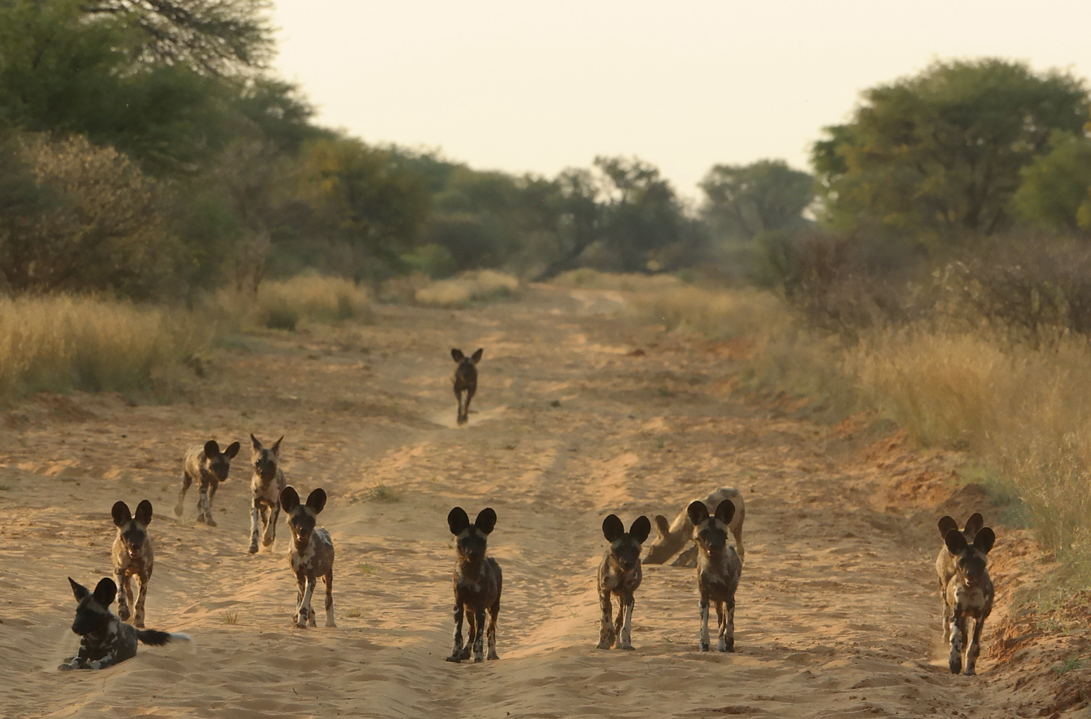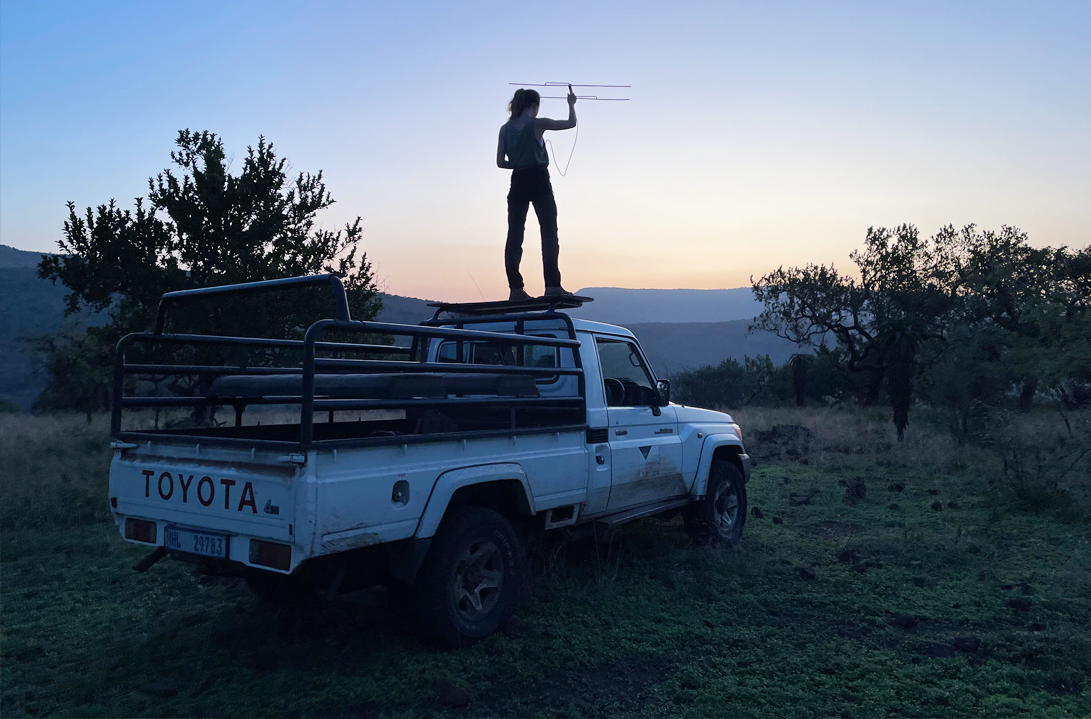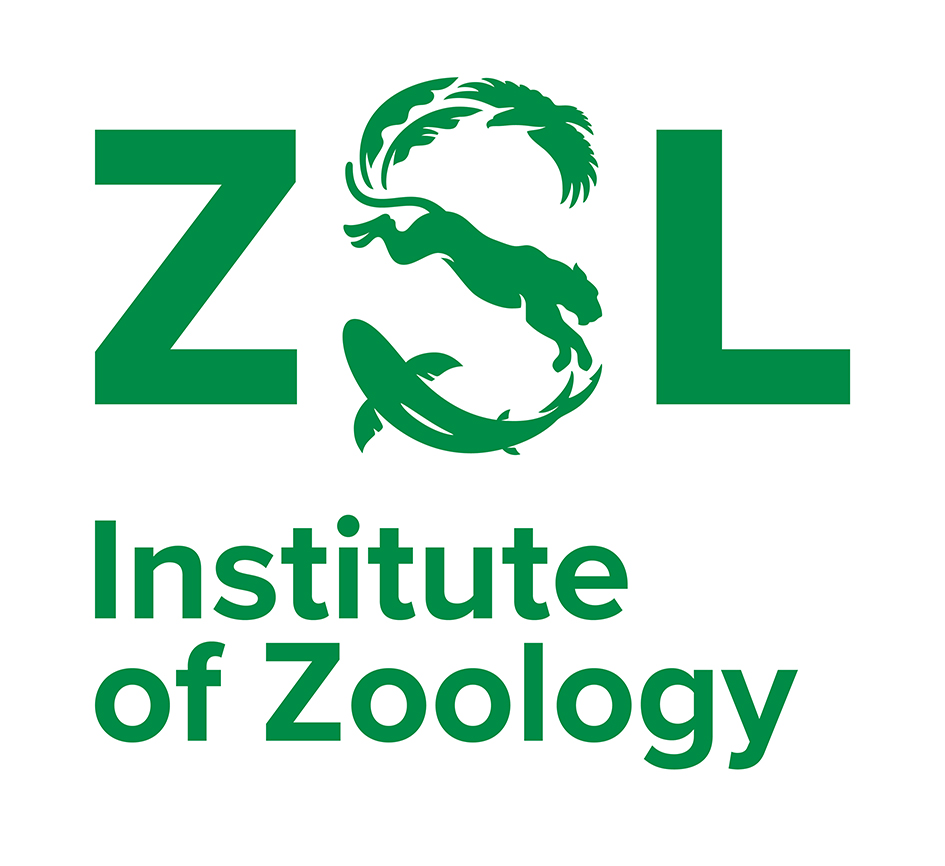Focussing on one of Africa’s most endangered carnivore species, this research investigates how climate change could threaten the African wild dog (Lycaon pictus). This project uses data collected by partners at ZSL’s Institute of Zoology (IoZ) to assess potential impacts at both an individual and range-wide scale, to inform future conservation management in our changing climate.
CONSERVATION CONTEXT
Climate change has been established as a prominent threat to biodiversity, altering species’ distributions, phenology, and demography. Research has identified African wild dogs as likely vulnerable to such impacts due to their greatly restricted range and observed reductions in reproductive success and activity in hot weather, which could lead to an increased extinction risk. With less than 9% of their historic range remaining today, a population of only 700 packs, and the ongoing threats of habitat loss, infectious disease, and conflict with humans, understanding how climate change could contribute to further losses will be vital for the species’ conservation. This research aims to disentangle how climate change could threaten wild dogs directly, through impacts on individual physiology and behaviour, and indirectly, through future habitat alteration.



APPROACH
‘Hot Dogs’
Using data collected through IoZ’s ‘Hot Dogs’ Project in Kenya, South Africa, and Zimbabwe, this branch focusses on direct impacts of hot weather. With a combination of body temperature, movement, and activity data from collars and thermal data loggers, we aim to explore whether ambient temperatures compromise wild dog physiology and behaviour. Understanding the species’ response to changes in local weather will ultimately dictate their likelihood of persistence under climate change. We hence aim to provide the evidence basis for conservation management that will account for this emerging threat.
Dangerous Distributions?
Using range data from across Africa, this branch aims to identify areas predicted to remain suitable for wild dog populations, both today and in the future, by modelling habitat associations. These predictions will permit targeting of surveys to such areas within uncertain range today, as well as the evaluation of the suitability of sites previously identified for reintroduction. Looking forward, these predictions will account for climate and land use change – highlighting where range shifts of contractions could take place, and hence where conservation attention could be focussed.
PROJECT MEMBERS
This project is led by DPhil student Jennifer Linden, with co-supervision from WildCRU Director Amy Dickman. External supervisors are Rosie Woodroffe at IoZ (lead), Christl Donnelly at the Department of Statistics, and Daniella Rabaiotti.
PROJECT PARTNERS
Co-supervision and data ownership – Institute of Zoology, Zoological Society of London; Research collaborators – Swansea University, University of the Witwatersrand, University of Pretoria, The Endangered Wildlife Trust, Mpala Research Centre, African Wildlife Conservation Fund; Funders – UKRI Natural Environment Research Council, The Rufford Foundation.


